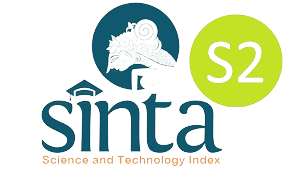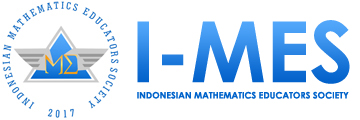Enhancing critical thinking with realistic mathematics education: Insight from learning styles, thinking habits, and cognitive abilities
DOI:
https://doi.org/10.29408/jel.v11i3.30013Keywords:
cognitive ability, critical thinking ability, learning style, thinking habitsAbstract
Although critical thinking is vital in 21st-century learning, mathematics classes often emphasise procedures over reasoning. Few studies have explored how students’ characteristics (learning styles, thinking habits, and cognitive abilities) interact with contextual learning approaches such as Pendidikan Matematika Realistik Indonesia (PMRI). This study aimed to describe the students’ critical thinking using PMRI as a learning approach, specifically by analysing how these abilities vary based on students’ learning styles, thinking habits, and cognitive ability levels. The context of water pH was used to explore the measures of central tendency. Students were observed based on their learning styles, thinking habits, and cognitive abilities. This study used a descriptive qualitative method with 29 eighth-grade students from junior high school in Palembang. Data were collected through tests, questionnaires (learning styles and thinking habits), and the participants’ academic records. The data were analysed using Miles, Huberman, and Saldana’s model, which involves data reduction, presentation, and conclusions. The results show that female students tend to possess “quite critical category”, while male students also show “quite critical category” category when analysed by learning style, but lower in thinking habits and cognitive ability. This implies that teaching should consider students' differences to support the development of critical thinking.
References
Almulla, M. (2018). Investigating teachers’ perceptions of their own practices to improve students’ critical thinking in secondary schools in Saudi Arabia. International Journal of Cognitive Research in Science, Engineering and Education (IJCRSEE), 6(3), 15–27. https://doi.org/10.5937/ijcrsee1803015A
Apiati, V., & Hermanto, R. (2020). Kemampuan berpikir kritis peserta didik dalam memecahkan masalah matematik berdasarkan gaya belajar [Students’ critical thinking ability in solving mathematical problems based on learning styles]. Mosharafa: Jurnal Pendidikan Matematika, 9(1), 167–178. https://doi.org/10.31980/mosharafa.v9i1.601
As’ari, A. R., Kurniati, D., & Subanji. (2019). Teachers expectation of students’ thinking processes in written works: A survey of teachers’ readiness in making thinking visible. Journal on Mathematics Education, 10(3), 409–424. https://doi.org/10.22342/jme.10.3.7978.409-424
Cazorla, I. M., Utsumi, M. C., & Magina, S. M. (2023). The conceptual field of measures of central tendency: A first approximation. International Electronic Journal of Mathematics Education, 18(4), em0748. https://doi.org/10.29333/iejme/13571
Chukwuyenum, A. N. (2013). Impact of critical thinking on performance in mathematics among senior secondary school students in lagos state. IOSR J of Research & Method in Education (IOSR-JRME), 3(5), 18–25. https://doi.org/10.9790/7388-0351825
Delina, & Afrilianto, M. (2025). Analysis of mathematical critical thinking skills using differentiation learning on junior high school students based on learning style. Journal of Innovative Mathematics Learning, 8(1), 22–30. https://doi.org/10.22460/jiml.v8i1.p23276
Dewi, D. K., Khodijah, S. S., & Zanthy, L. S. (2020). Analisis kesulitan matematik siswa SMP pada materi statistika [Analysis of junior high school students’ difficulties in statistics]. Jurnal Cendikia: Jurnal Pendidikan Matematika, 04(01), 1–7. https://doi.org/10.31004/cendekia.v4i1.148
Facione, P. A. (2013). Critical thinking: what it is and why it counts. 1–25.
Franklin, & Mewborn. (2007). Statistics in the elementary grade: Exporing distributions of data. Teaching Children Mathematics, 15(1), 10–16.
Hanifatulianti, F. I., & Sumitro, N. K. (2023). Analisis kemampuan berfikir kritis siswa dalam memecahkan masalah pada materi statistika [An analysis of students’ critical thinking ability in solving problems in statistics]. Jurnal of Millenial Education (JoME), 2(2), 133–146. https://doi.org/10.13189/ujer.2020.080606
Hariri, D. D., Mahmudah, H., Wibawa, F. S., & Kania, N. (2025). Unraveling the connection: A systematic review of learning styles and mathematics achievement. Pedagogical Research, 10(1), em0232. https://doi.org/10.29333/pr/15681
Hikayat, C., Suparman, Hairun, Y., & Suharna, H. (2020). Design of realistic mathematics education approach to improve critical thinking skills. Universal Journal of Educational Research, 8(6), 2232–2244. https://doi.org/10.13189/ujer.2020.080606
Karakoç, M. (2016). The significance of critical thinking ability in terms of education. International Journal of Humanities and Social Science, 6(7). www.ijhssnet.com
Lambertus, E, C., M.R. Saban, M Sudia, M Anggo, & Kadir. (2016). Junior high school students’ mathematical critical thinking ability under realistic mathematics approach. Science International (LAHORE), 28(2), 1377–1382.
Munawwarah, M., Laili, N., & Tohir, M. (2020). Keterampilan berpikir kritis mahasiswa dalam memecahkan masalah matematika berdasarkan keterampilan abad 21 [College students’ critical thinking skills in solving mathematical problems based on 21st-century skills]. Alifmatika: Jurnal Pendidikan dan Pembelajaran Matematika, 2(1), 37–58. https://doi.org/10.35316/alifmatika.2020.v2i1.37-58
Nasrulloh, M. F., & Amin, W. F. (2022). Improve critical thinking by developing teaching materials based on realistic mathematics learning. APPLICATION: Applied Science in Learning Research, 1(3), 129–135. https://doi.org/10.32764/application.v1i3.1621
Nova, E., Retta, A. M., & Nopriyanti, T. D. (2022). Student worksheet development using the PMRI approach in the classroom context with an orientation toward students’ conceptual understanding. Jurnal Pendidikan Matematika, 16(2), 203–214. https://doi.org/10.22342/jpm.16.2.14854.203-214
Palinussa, A. L. (2013). Students’ critical mathematical thinking skills and character: Experiments for junior high school students through realistic mathematics education culture-based. IndoMS. J.M.E, 4(1), 75–94. https://doi.org/10.22342/jme.4.1.566.75-94
Prasetyawan, E. (2018). Keefektifan pendekatan CTL dan discovery ditinjau dari prestasi, kemampuan berpikir kritis dan kecemasan matematika [The effectiveness of the CTL and discovery approaches in terms of achievement, critical thinking ability, and mathematics anxiety]. Pythagoras: Jurnal Pendidikan Matematika, 13(2), 168–180. https://doi.org/10.21831/pg.v13i2.21221
Purwanto, W. R., Waluya, S. B., Rochmad, & Wardono. (2020). Analysis of mathematical critical thinking ability in student learning style. Journal of Physics: Conference Series, 1511(1). https://doi.org/10.1088/1742-6596/1511/1/012057
Putri, S. P., Fajriah, N., & Juhairiah. (2024). Hubungan gaya belajar dan hasil belajar siswa materi statistika pada implementasi kurikulum merdeka [The relationship between learning styles and student learning outcomes in statistics during the implementation of the independent curriculum]. Jurnal Mahasiswa Pendidikan Matematika, 4(1), 47–53. https://doi.org/10.20527/jurmadikta.v4i1.2576
Rahayu, P. T., & Putri, R. I. I. (2021). The data package in learning mean using LSLC and PMRI. Mathematics Education Journal, 15(1), 61–70. https://doi.org/10.22342/jpm.15.1.9431.61-70
Revina, S., & Leung, F. (2019). How the same flowers grow in different soils? The implementation of realistic mathematics education in utrecht and Jakarta classrooms. Int J of Sci and Math Educ, 17, 565–589. https://doi.org/10.1007/s10763-018-9883-1
Sari, D. L., & Nursyahidah, F. (2022). Learning design for statistics materials using the context of traditional market assisted by interactive videos. Jurnal Elemen, 8(1), 29–42. https://doi.org/10.29408/jel.v8i1.4067
Sari, S. N., & Rosyidi, A. H. (2025). Berpikir kritis siswa dalam menyelesaikan masalah matematika kontekstual terbuka ditinjau dari gaya kognitif reflektif dan impulsif [Students’ critical thinking in solving open-ended contextual mathematical problems viewed from reflective and impulsive cognitive styles]. Mathedunesa, 14(1), 175–194. https://doi.org/10.26740/mathedunesa.v14n1.p175-194
Siregar, S. (2015). Statistika terapan untuk perguruan tinggi [Applied statistics for college students]. Kencana.
Spector, J. M., & Ma, S. (2019). Inquiry and critical thinking skills for the next generation: from artificial intelligence back to human intelligence. Smart Learning Environments, 6(1), 1. https://doi.org/10.1186/s40561-019-0088-z
Subini, N. (2015). Rahasia gaya belajar orang besar [The secret learning styles of great people]. PT. Buku Kita.
Sugiyono. (2015). Metode penelitian kualitatif dan kuantitatif dan R&D [Qualitative, quantitative, and research and development (R&D) methods]. Bandung: Alfabeta.
Utami, I. D., Fitriyah, L. M., & Indraswari, N. F. (2020). Kemampuan berpikir kritis siswa dalam memecahkan masalah statistika ditinjau dari gaya belajar [Students’ critical thinking ability in solving statistical problems viewed from their learning styles]. Musamus Jurnal of Mathematics Education, 3(1), 19–26. https://doi.org/10.35724/mjme.v3i1.3166
Yılmaz-özcan, N., & Tabak, S. (2019). The effect of argumentation-based social studies teaching on academic achievement, attitude and critical thinking tendencies of students. International Electronic Journal of Elementary Education, 12(2), 213–222. https://doi.org/10.26822/iejee.2019257669
Yusuf, Y., R, N. T., & W, T. Y. (2017). Analisis hambatan belajar siswa SMP pada materi statistika [An analysis of junior high school students’ learning obstacles in statistics]. Jurnal Aksioma, 8(1), 76–86. https://doi.org/10.26877/aks.v8i1.1509
Zulkardi, & Putri, R. I. I. (2010). Pengembangan blog support untuk membantu siswa dan guru matematika Indonesia belajar Pendidikan Matematika Realistik Indonesia (PMRI) [The development of a support blog to assist Indonesian students and mathematics teachers in learning Indonesian Realistic Mathematics Education (PMRI)]. Jurnal Inovasi Perekayasa Pendidikan (JIPP), 2(1), 1–24.
Downloads
Published
How to Cite
Issue
Section
License
Copyright (c) 2025 Allen Retta, Ratu Ilma Indra Putri, Zulkardi, Ely Susanti

This work is licensed under a Creative Commons Attribution-ShareAlike 4.0 International License.
Authors who publish with the Jurnal Elemen agree to the following terms:
- Authors retain copyright and grant the journal right of first publication with the work simultaneously licensed under Creative Commons Attribution-ShareAlike 4.0 International License (CC BY-SA 4.0).
- Authors are able to enter into separate, additional contractual arrangements for the distribution of the journal's published version of the work (e.g., post it to an institutional repository or publish it in a book), with an acknowledgment of its initial publication in this journal.
- Authors are permitted and encouraged to post their work online (e.g., in institutional repositories or on their website) prior to and during the submission process, as it can lead to productive exchanges, as well as earlier and greater citation of published work.
Jurnal Elemen is licensed under a Creative Commons Attribution-ShareAlike 4.0 International License





